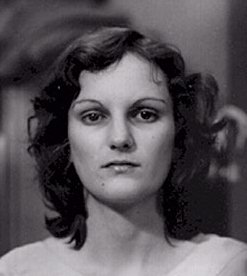Hearst was 19 years old in 1974, when she was kidnapped from her 26-year-old boyfriend's apartment in Berkley, California by the Symbionese Liberation Army. This group, known as the SLA, was a left-wing revolutionary group that was especially active between 1973 and 1975. They were known for their acts of violence, including murders and robberies.
When Hearst was abducted, the SLA first demanded that their members in jail be released in return for Hearst. Their swap was refused; they then asked the Hearsts to donate 400 million dollars to California's needy. Patty Hearst's father agreed to donate 6 million dollars worth of food, but when he did so, the SLA refused to release Patty because of the poor quality of the food.
Interest was sparked in the case when the SLA released a recording of Hearst saying her father could have done better with the food. Hearst also denounced her family in other ways, and claimed that she joined the SLA and changed her name to Tania.
Just a few months later, Hearst was photographed robbing the Hibernia Bank in San Francisco. During her time with the SLA, she participated in other illegal activity and declared her love for one of the main members of the group, Wolfe. She claimed that he was "the gentlest, most beautiful man I've ever known."
 Patty Hearst photographed robbing the Hibernia Bank
Patty Hearst photographed robbing the Hibernia BankThe FBI and the SFPD finally arrested Hearst in September of 1975, along with one other member of the SLA. Upon her arrest, she listed her occupation as "Urban Guerrilla." During the months of her pretrial confinement, Hearst continued to identify herself as a member of the SLA. At trial in 1976, Hearst's defense claimed that she been brainwashed and suffered Stockholm Syndrome, a psychological phenomenon in which hostages eventually develop positive feelings towards and side with their captors.
During the trial, Hearst claimed that she had been sexually abused by members of the SLA, including Wolfe, of whom she had spoken so fondly. She said that she had been imprisoned in a dark, narrow closet for days. The defense claimed that Hearst's behaviors had been a result of this brainwashing.
The prosecution, however, offered evidence about Hearst's rebellious adolescence. The prosecution undermined her credibility by revealing inconsistencies and omissions in her testimony, especially her failure to provide evidence about other captured SLA members, and ultimately obtained a conviction.
After many efforts and attempts, Hearst was finally granted a full pardon by President Bill Clinton in 2001 and the charges against her were dropped.
Sources:
http://www.trutv.com/library/crime/terrorists_spies/terrorists/hearst/1.html
http://www.hearstcastle.org/history-art/historic-people/william-randolph-hearst
http://www.hearstcastle.org/history-art/historic-people/george-hearst
http://en.wikipedia.org/wiki/Symbionese_Liberation_Army
http://en.wikipedia.org/wiki/Willie_Wolfe
http://en.wikipedia.org/wiki/Stockholm_syndrome
http://en.wikipedia.org/wiki/List_of_people_pardoned_by_Bill_Clinton
http://law2.umkc.edu/faculty/projects/ftrials/hearst/hearstbio75.jpg
http://www.cnn.com/CNN/Programs/people/images/story.bank.rob.jpg

 English poet
English poet 






